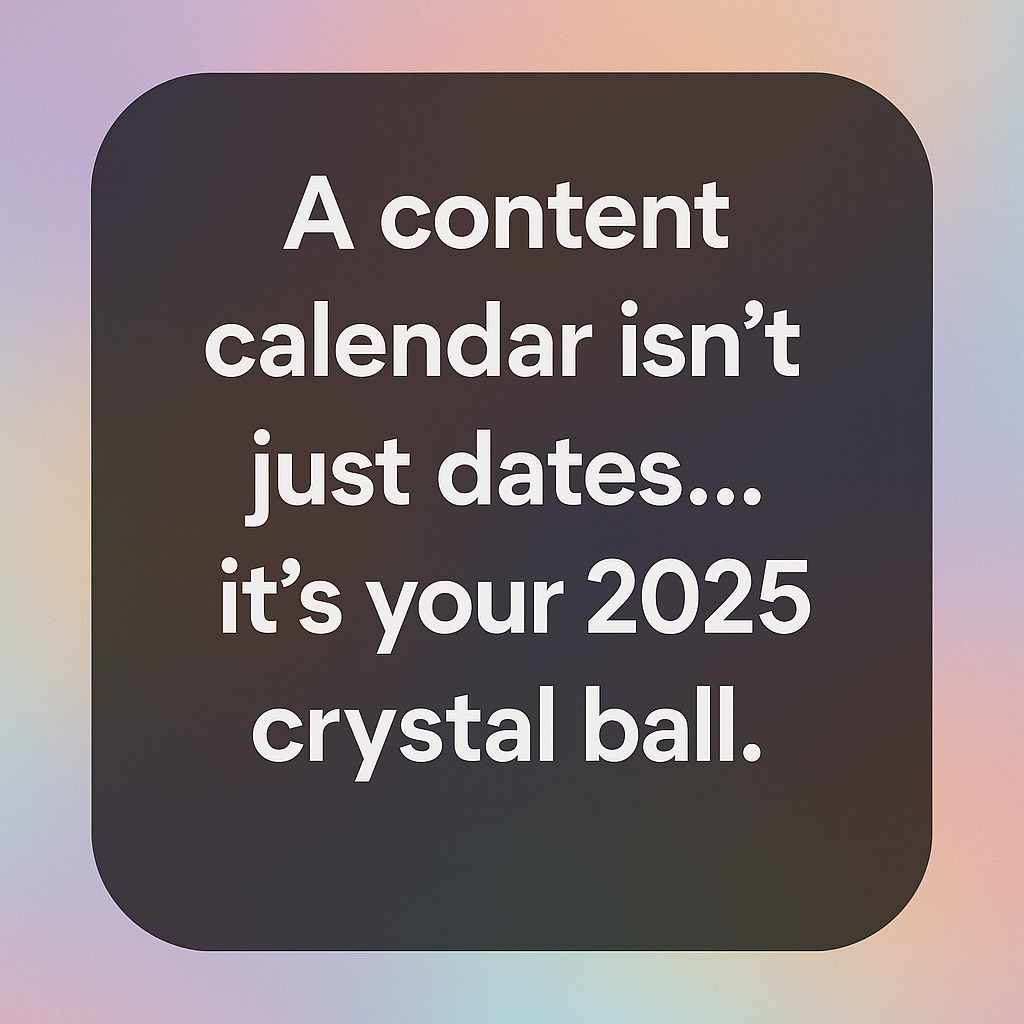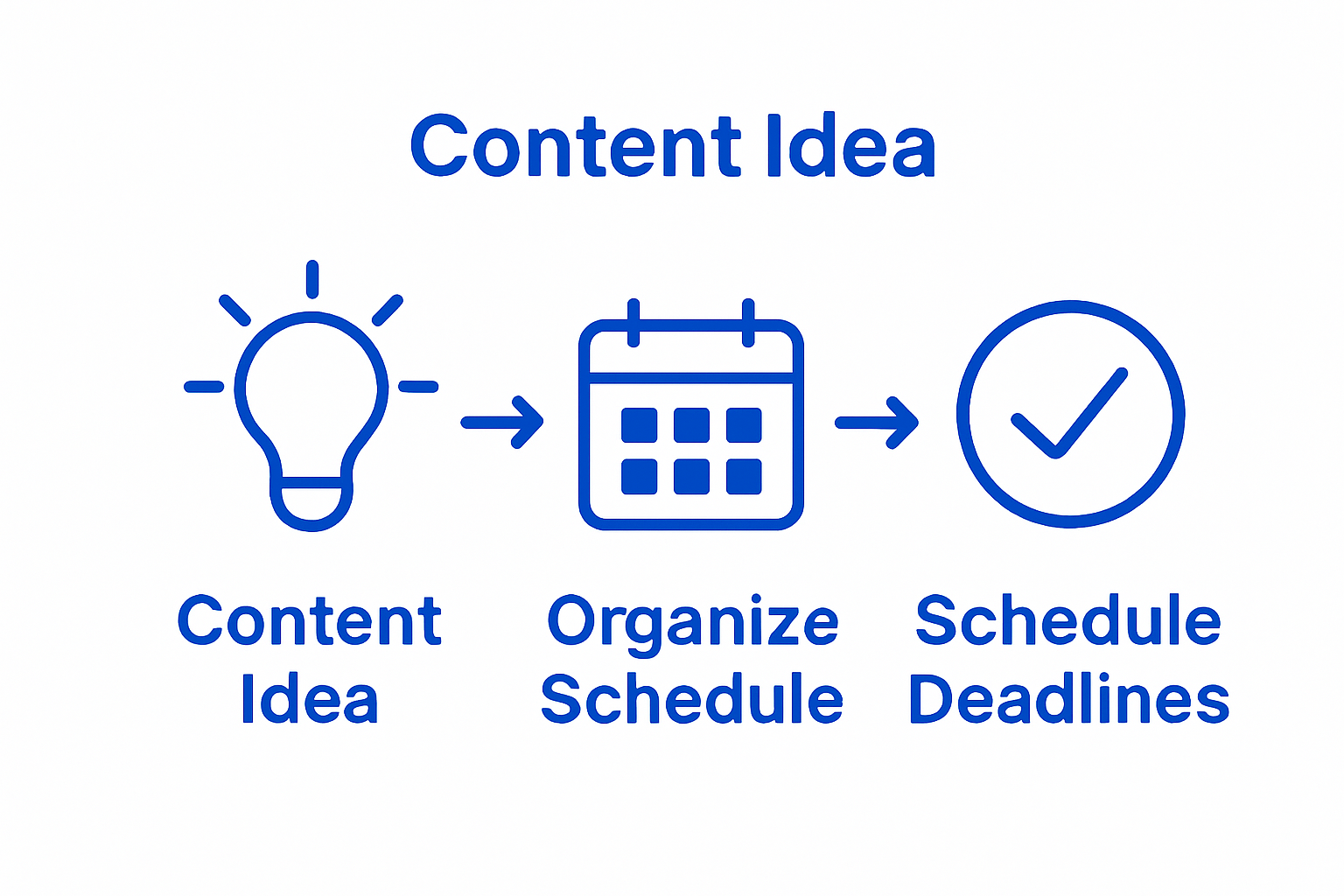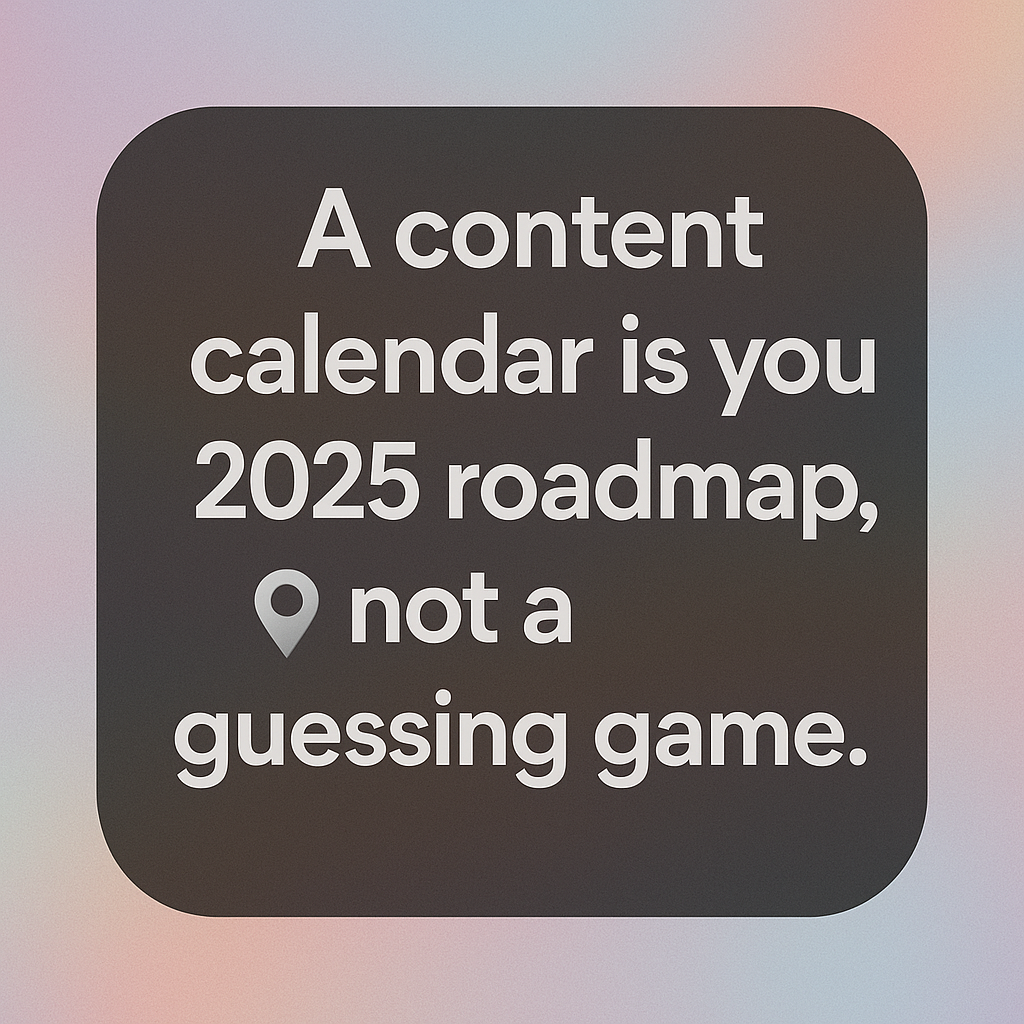
Building a content calendar can feel overwhelming at first. Most people scribble ideas without a real plan and hope something sticks. Yet research shows that defining clear, measurable goals can raise your success rate by over 70 percent. The biggest surprise? A content calendar is not just about scheduling posts. When done right, it’s a tool that helps you outsmart your competition and turn every piece of content into a powerful step toward your business goals.
Table of Contents
- Step 1: Define Your Content Goals And Audience
- Step 2: Research Relevant Content Ideas And Themes
- Step 3: Choose Your Content Calendar Tool Or Template
- Step 4: Organize Content Ideas Into A Calendar Layout
- Step 5: Schedule Deadlines And Assign Responsibilities
- Step 6: Review And Adjust Your Content Calendar Regularly
Quick Summary
| Key Point | Explanation |
|---|---|
| 1. Define clear content goals | Identify specific outcomes to focus your content strategy, such as increasing subscribers or generating leads. |
| 2. Research audience insights deeply | Create detailed personas to understand clients’ challenges and preferences for tailored content. |
| 3. Choose a suitable content calendar tool | Select a tool that fits your workflow and simplifies the content planning process without extra complexity. |
| 4. Organize content ideas strategically | Structure your content calendar to align themes, diversify content types, and reflect key industry events. |
| 5. Regularly review and adjust your strategy | Continuously evaluate content performance and be flexible to adapt to audience feedback and market changes. |
Step 1: Define Your Content Goals and Audience
Successful content calendar creation starts with crystal clear strategic foundations. Before plotting a single piece of content, you need to precisely understand what you want to achieve and who you are speaking to. This initial step transforms your content from random posts into a purposeful communication strategy.
Defining your content goals requires deep introspection about your business objectives and audience needs. Begin by asking yourself critical questions: What specific outcomes do you want your content to generate? Are you aiming to increase brand awareness, drive sales, establish thought leadership, or educate your target market? Each goal demands a unique content approach.
To effectively map your goals, break them down into measurable and specific targets. Instead of vague aspirations like “grow my audience,” define concrete metrics such as “increase email subscribers by 25% in six months” or “generate 50 qualified leads through educational content.” These precise objectives will guide every content decision in your calendar.
Audience identification is equally crucial. You must understand not just demographic details, but deeper psychographic insights about your ideal clients. Create a detailed audience persona that goes beyond basic age and location. Consider their professional challenges, personal motivations, learning preferences, and content consumption habits. According to research from the University of Washington, understanding user needs and behaviors is fundamental to an effective content strategy.
For solopreneurs and service providers, audience research might involve surveying existing clients, analyzing past engagement metrics, or conducting informal interviews. Pay attention to the language they use, the problems they frequently mention, and the solutions they seek. This rich qualitative data will help you craft content that resonates deeply and feels personally relevant.
Verify your goal and audience definition by asking: Can I articulate my content’s purpose in one clear sentence? Do I know exactly who will benefit from this content? Have I identified specific ways to measure my content’s success? If you can confidently answer these questions, you have completed the foundational work for your content calendar creation.
Use this checklist table to verify that each key foundational step for building your 2025 content calendar is complete before moving forward.
| Step | Verification Question | Completion Status |
|---|---|---|
| Define clear content goals | Can I articulate my content’s purpose in one clear sentence? | |
| Identify specific, measurable objectives | Have I established target metrics for each goal? | |
| Create detailed audience personas | Do I know exactly who will benefit from this content? | |
| Gather client qualitative data | Have I analyzed client language and challenges? | |
| Establish audience research methods | Did I survey clients, review engagement, or conduct interviews? | |
| Align goals to actionable content decisions | Can I connect each calendar entry to a defined goal? |
Step 2: Research Relevant Content Ideas and Themes
Researching content ideas transforms your calendar from a blank template into a strategic roadmap for engaging your audience. After defining your goals and understanding your target market, you now enter the creative exploration phase where potential content themes will emerge and take shape.
Start by conducting comprehensive audience research using multiple intelligence gathering methods. Social media platforms provide incredible insights into current conversations and emerging trends within your professional ecosystem. Tools like Reddit discussion forums, LinkedIn groups, and industry-specific online communities can reveal genuine questions, challenges, and interests your potential clients are experiencing.
Keyword research becomes your strategic compass during this exploration. Utilize free tools like Google Trends, Answer the Public, and YouTube’s search suggestions to uncover what people are actively searching for in your professional domain. Look beyond surface level topics and identify underlying pain points and knowledge gaps that your content can address comprehensively.
Client interaction history represents another goldmine of content ideas. Review past client conversations, frequently asked questions, email exchanges, and consultation notes. Each interaction potentially contains a compelling content theme waiting to be developed. Pay special attention to recurring questions or challenges that multiple clients have shared, as these represent high-value content opportunities.
Competitive content analysis provides additional strategic insights. Examine what other professionals in your niche are producing, identifying not just topics they cover but gaps in their content approach. Your goal is not to copy but to differentiate and provide more nuanced, valuable perspectives that truly serve your audience.
During this research phase, document every potential content idea without judgment. Create a running list or digital document where you capture themes, potential titles, and initial concept notes. This brain dump approach ensures you do not lose valuable inspiration moments.
Verify the quality of your research by asking: Have I generated at least 20-30 potential content ideas? Do these ideas directly connect to my defined audience goals? Can I articulate the unique value each potential piece will provide? If you can confidently answer these questions, you have successfully completed the content idea research stage.
Step 3: Choose Your Content Calendar Tool or Template
Selecting the right content calendar tool or template marks a critical transition from strategic planning to practical execution. Your chosen platform will become the central nervous system of your content production process, determining how efficiently you can track, create, and publish content throughout the year.
For solopreneurs and service providers, the ideal content calendar solution balances simplicity with robust functionality. While complex enterprise tools might seem impressive, they often create unnecessary complexity. Focus on platforms that integrate seamlessly with your existing workflow and require minimal technical expertise to manage.
Spreadsheet applications like Google Sheets and Microsoft Excel remain powerful and accessible options for many professionals. These tools offer incredible flexibility, allowing you to customize columns for content type, publication date, status, target audience, and key performance indicators. Their collaborative features enable easy sharing and real time updates, making them attractive for solo creators who occasionally work with contractors or virtual assistants.
Digital project management platforms such as Trello and Notion provide more visually dynamic content calendar experiences. These tools use kanban board interfaces that allow you to move content pieces through different production stages tracking progress at a glance. Their drag and drop functionality makes content planning feel more intuitive and less like administrative work.
Cloud based productivity suites increasingly offer specialized content calendar templates that can be immediately deployed. Google Workspace and Microsoft 365 include pre configured templates designed specifically for content creators, reducing the initial setup time and providing professional structural frameworks.
When evaluating potential content calendar tools, consider your specific professional context. A wellness coach might prioritize different features compared to a digital marketing consultant.
Below is a comparison table summarizing pros, features, and workflow compatibility of different content calendar tools mentioned in the article.
| Tool/Platform | Key Features & Benefits | Workflow Compatibility |
|---|---|---|
| Google Sheets/Excel | Highly flexible, customizable columns, collaborative, real-time update | Good for solo/contractor collaboration |
| Trello | Visual kanban boards, drag & drop, intuitive progress tracking | Best for visually driven planners |
| Notion | Visual, customizable, integrates notes and project management | Ideal for mixed media/content planners |
| Cloud Suite Templates | Pre-configured, easy setup, professional framework | Great for quick deployment |
| Google Workspace/Microsoft 365 | Content-focused templates, integrates with cloud storage | Suited for digital content creators |
Verify your tool selection by asking: Can I easily view my entire content strategy at a glance? Does this platform support my content creation process without feeling cumbersome? Can I quickly adjust and reprioritize content as needed? If you can confidently answer these questions, you have successfully selected the right content calendar tool for your 2025 strategy. Learn more about content calendar planning to refine your approach further.
Step 4: Organize Content Ideas into a Calendar Layout
Transforming your collection of content ideas into a structured calendar layout represents the pivotal moment where strategy meets tactical execution. This step converts your creative brainstorming into a concrete roadmap that will guide your content production throughout the year.

Begin by establishing a macro view of your annual content landscape. Map out significant industry events, seasonal trends, and potential product or service launches that will influence your content strategy. These anchor points will help you distribute content ideas strategically across different months, ensuring a balanced and purposeful approach.
When plotting your content, consider creating thematic clusters that align with your business objectives. Group related content pieces that can build upon each other, creating a narrative progression that keeps your audience engaged. For instance, a wellness coach might design a quarterly theme around holistic health, with interconnected topics that explore physical, mental, and emotional wellness.
Prioritize content diversity within your calendar layout. Alternate between different content types such as educational blog posts, instructional videos, personal stories, and client case studies. This variety prevents audience fatigue and caters to different learning preferences and consumption habits.
Implement a color coding or tagging system to quickly visualize content categories, production status, and strategic priorities. Assign clear visual indicators that allow you to instantly understand the composition of your content mix. This might include color codes for content type, difficulty level, or intended audience segment.
Incorporate buffer zones and flexibility into your calendar. While planning is crucial, solopreneurs know that unexpected opportunities and challenges will arise. Leave some space for spontaneous content creation, trending topics, or timely industry discussions. Learn more about managing calendar booking tools to optimize your scheduling efficiency.
Create realistic timelines for content production, factoring in research, writing, editing, graphic design, and publication processes. Be honest about your capacity and avoid overcommitting. According to research from California State University, a well structured content calendar enhances coordination and consistency.
Verify your calendar layout by asking: Does my content strategy tell a cohesive story? Have I balanced different content types and themes? Can I realistically produce the planned content? If you can confidently answer these questions, you have successfully organized your content ideas into a strategic calendar layout.
Step 5: Schedule Deadlines and Assign Responsibilities
Scheduling deadlines and assigning responsibilities transforms your content calendar from a static document into a dynamic operational blueprint. This critical step ensures that every planned piece of content moves from concept to completion with clear accountability and structured timelines.
Realistic deadline setting requires a nuanced understanding of your personal production capacity and potential challenges**. Begin by analyzing each content piece and breaking down its creation process into granular stages: research, drafting, editing, design, review, and publication. Allocate specific time blocks for each stage, building in buffer periods to account for unexpected delays or creative blocks.
For solopreneurs managing multiple responsibilities, time blocking becomes an essential strategy. Dedicate specific days or time slots to different content production stages. For instance, you might designate Monday mornings for research, Tuesday afternoons for writing drafts, and Wednesday mornings for editing and refinement. This structured approach prevents last minute rushes and creates a predictable workflow.
When assigning responsibilities, be brutally honest about your capabilities. If you are a solo creator, you are responsible for every stage of content production. However, this does not mean you must complete everything independently. Consider outsourcing specific tasks like graphic design, video editing, or proofreading to freelancers or virtual assistants. Platforms like Upwork and Fiverr can connect you with specialized professionals who can enhance your content quality.
Implement a color coding or tracking system that allows you to monitor the progress of each content piece. Use visual indicators that show the status of each project moving through different production stages. This approach provides an immediate visual snapshot of your content pipeline, helping you identify potential bottlenecks or areas requiring immediate attention.
Create accountability mechanisms beyond personal tracking. Schedule weekly or bi weekly review sessions with yourself to assess progress, adjust timelines if needed, and maintain momentum. According to research from West Virginia University, effective content calendars include clear goals, themes, and target audience considerations.
Verify your deadline and responsibility assignment by asking: Have I allocated realistic timeframes for each content piece? Can I confidently manage these production schedules? Have I identified potential support resources if needed? If you can answer these questions affirmatively, you have successfully scheduled deadlines and assigned responsibilities within your content calendar.

Step 6: Review and Adjust Your Content Calendar Regularly
Regular review and adjustment of your content calendar transforms it from a static plan into a living, responsive strategy that adapts to your evolving business landscape. This final step ensures your content remains relevant, effective, and aligned with your core business objectives throughout the year.
Performance tracking becomes your strategic compass during these review sessions. Establish a consistent rhythm for evaluating your content performance, whether monthly or quarterly. Analyze key metrics such as audience engagement, conversion rates, social media interactions, and website traffic generated by each piece of content. Look beyond surface level numbers to understand the deeper narrative these metrics reveal about your audience’s preferences and behaviors.
Develop a systematic approach to content assessment. Create a scorecard or evaluation framework that objectively measures each content piece against predefined goals. Consider factors like audience reach, engagement depth, alignment with original content objectives, and potential for future content development. This structured approach prevents subjective decision making and provides clear insights into what content strategies are truly working.
Remain flexible and willing to pivot. If certain content types or themes consistently underperform, be prepared to recalibrate your strategy. This might mean adjusting topic selections, experimenting with different content formats, or repositioning your messaging to better resonate with your target audience. Explore content positioning tips to refine your approach.
Integrate audience feedback as a crucial component of your review process. Pay attention to comments, direct messages, email responses, and informal conversations with clients. These qualitative insights often reveal nuanced understanding of your audience’s needs that pure quantitative data might miss. Your content calendar should be a dynamic tool that reflects real world interactions and emerging market trends.
Implement a forward looking perspective during your reviews. Each assessment should not only evaluate past performance but also generate ideas for future content. Use your review sessions to brainstorm new content themes, identify potential collaboration opportunities, and anticipate upcoming industry shifts that could influence your content strategy.
According to research from West Virginia University, effective content calendars require ongoing evaluation to maintain relevance and effectiveness.
Verify the quality of your review process by asking: Have I objectively assessed my content performance? Am I willing to make data driven adjustments? Have I captured insights that can improve future content creation? If you can confidently answer these questions, you have successfully completed the critical task of reviewing and adjusting your content calendar.
Ready to Turn Your 2025 Content Calendar Into Real Business Growth?
You have just mapped out a strategic content calendar using research, audience insights, and careful planning. But do you still feel overwhelmed by the thought of managing content deadlines, bookings, client communication, and payments without support? Many solopreneurs hit a wall when transforming good ideas into consistent action. The challenge often comes from juggling too many tools or lacking an easy way to keep your business organized while focusing on growth. Imagine an AI-powered solution that not only keeps your calendar on track but also handles your sales funnels, automates your workflows, and manages your client relationships in one place.

With Fluum.ai, you can automate your entire business workflow while executing your content strategy more consistently and effortlessly. Spend less time in spreadsheets and more time connecting with clients and building your expertise. Explore our simple pricing at see our pricing options and discover how our templates, integrations, and AI-powered support can help you scale smarter. Do not let another year go by fighting complexity. Act now to finally create the freedom and growth your 2025 content calendar is designed to deliver.
Frequently Asked Questions
What are the key steps to create an effective content calendar for 2025?
Creating an effective content calendar involves several key steps: defining your content goals and audience, researching relevant content ideas and themes, choosing the right calendar tool or template, organizing content ideas into a calendar layout, scheduling deadlines and assigning responsibilities, and regularly reviewing and adjusting your content calendar.
How can I identify my target audience when creating a content calendar?
To identify your target audience, create a detailed audience persona by gathering demographic details and psychographic insights. Consider their professional challenges, personal motivations, learning preferences, and content consumption habits. Surveys, past engagement metrics, and informal interviews can provide valuable insights.
What tools can I use to manage my content calendar?
You can use spreadsheet applications like Google Sheets and Microsoft Excel for flexibility, or digital project management platforms such as Trello and Notion for a visually dynamic experience. Cloud-based productivity suites also offer specialized content calendar templates to simplify setup and enhance organization.
How often should I review and adjust my content calendar?
You should review and adjust your content calendar regularly, ideally on a monthly or quarterly basis. This allows you to track performance metrics, assess engagement levels, and incorporate audience feedback to ensure your content remains relevant and effective.



